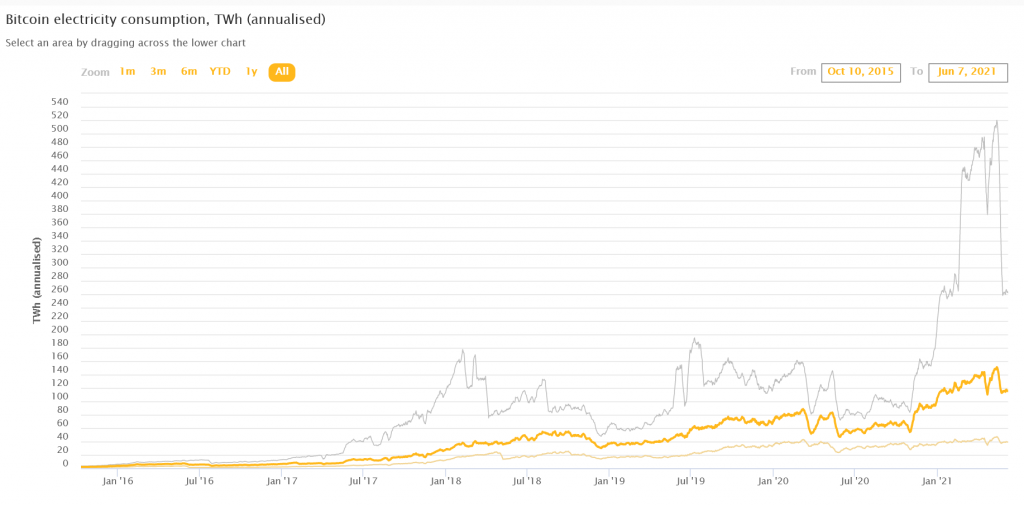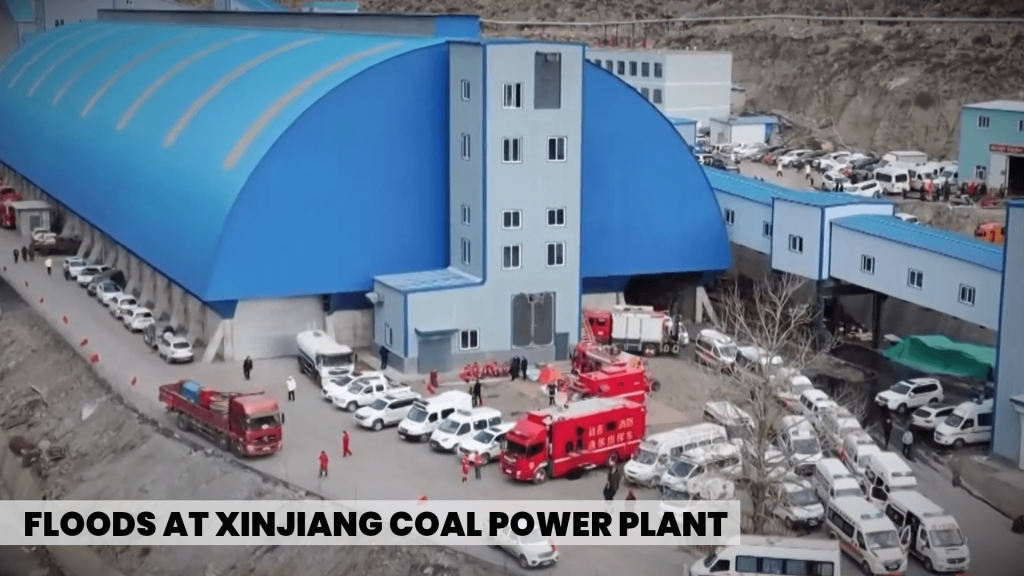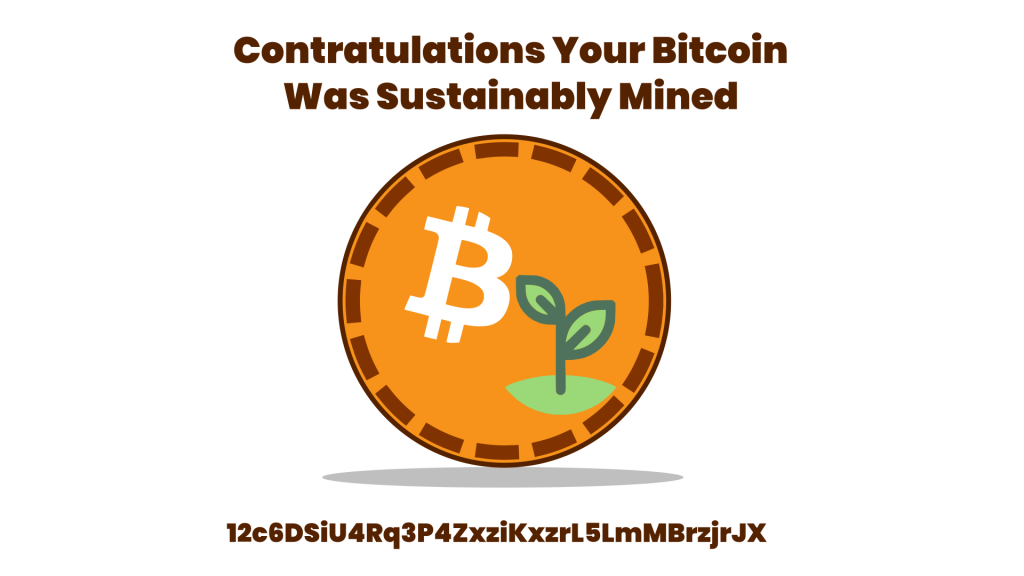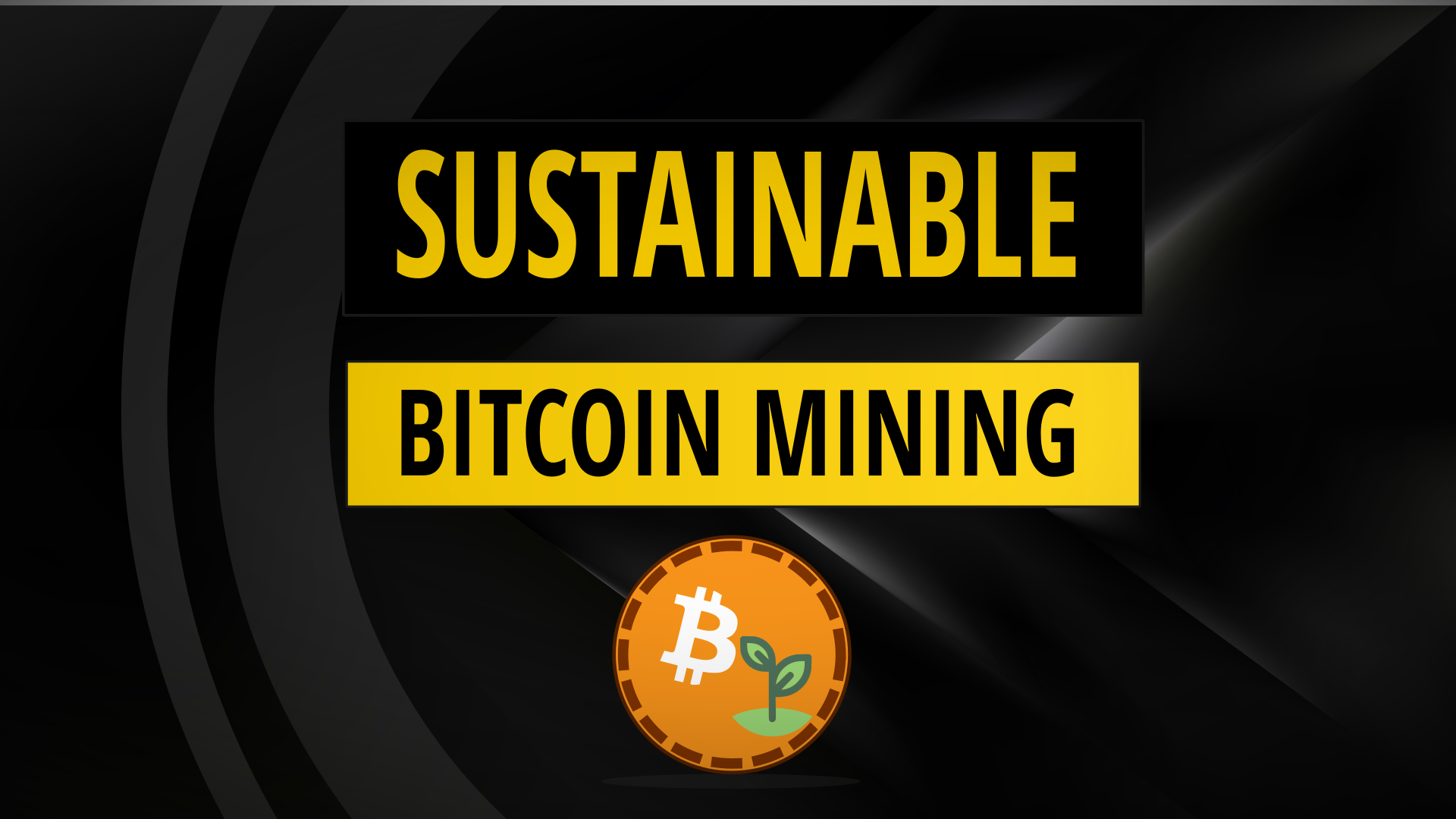This article explores Bitcoin mining sustainability and the idea of classifying Bitcoin by how it was mined to incentivise renewable energy.
- The Video: How To Incentivise Sustainable Bitcoin Mining
- The Idea: Tracking Bitcoin From Source
- The Problem: Bitcoin’s Environmental Impact
- The Solution: Bitcoin Mining Council
- Proof of Concept Code
The Video: How To Incentivise Sustainable Bitcoin Mining

The Idea: Tracking Bitcoin From Source
The idea is to identify the public key addresses of miners who use renewable energy and then trace the Bitcoin from the block rewards through an on-chain analytics application. This could then provide a classification even after the funds have been transferred to a new address or sold on exchange.

Because of the transparent and open nature of Blockchain transactions it’s possible to track a Bitcoin all the way back to the miner.
I believe that certain institutions may be willing to pay a premium for Bitcoin that can be proven to be mined from renewable sources. Telsa being the obvious example here but other institutions, funds and tech giants who may have been scared off by environmental concerns. Would you pay an extra 1% to know that your Bitcoin is mined from renewable sources? How about 5% or 10%? I don’t know what the percentage should be but I believe that alleviating that concern and incentivising renewable mining carries value.
How would you get the public keys? Some of the information required is in the public domain. Miners and mining pools would also be incentivised cooperate or partner with a scheme if they could charge a premium for their product directly adding to their bottom line.
This would enable a competitive advantage for green miners and incentivise a more sustainable Bitcoin network.
The Problem: Bitcoin’s Environmental Impact
The Cambridge Center for Alternative Finance estimates Bitcoin’s energy consumption at 115 TW(h) which means it consumes 0.55% of the global energy production.

On May 12th Elon Musk brought global attention to Bitcoin’s energy consumption by suspending Tesla vehicle purchases but what really highlighted the problem happened a month earlier.
In April 2021 a coal power plant in Xinjiang China flooded which in turn caused a number of miners to go offline. China exports electricity from coal power plants in Xinjiang using 1,100 KV converters to local power plants across other regions*. The knock on effect of losing that single coal power plant caused the Bitcoin hash rate to drop over 35% for a sustained period as miners suffered from loss of power and blackouts.

Previously quoted optimistic estimates of greater use of renewable energy for Bitcoin mining were thrown out the window. Coal power is still widely used for Bitcoin mining and is concentrated in China where Bitmain manufactures the mining hardware.
The Solution: Bitcoin Mining Council
An independent third party non-profit organisation would be ideally placed to provide the credibility required to get the idea off the ground.
Michael Saylor and Elon Musk recently met with North American miners to set up a Bitcoin Mining Council. This might be the ideal vehicle to provide a classification of Bitcoin mining origins. Some work would be involved in doing due diligence and vetting mining operations.
The tech side would involve a block explorer type web application that takes a public key and traces the Bitcoin to the source. If the source is a registered renewable partner then a little certificate pops up.

I’ve forwarded this proposal to Argo Blockchain PLC and Riot Blockchain LLC who are public companies on the Bitcoin Mining Council to see if they would champion the idea.
Proof of Concept Code
I experimented with building an overly simplified MVP using the blockchain.com API. There’s some issues with rate limits (1 call per 10 seconds) which meant I couldn’t get this past a very basic level. It currently doesn’t track individual inputs correctly and I think to do it properly you’d want to setup a node locally and precompute a lot of the data.
https://github.com/jamesbachini/Bitcoin-Sustainability-Classification
What this script does is get the data from the following API call:
https://blockchain.info/rawaddr/btcAddressHere
Looks for previous transaction inputs and follows the chain up to find the original miner.
Hopefully something similar to this could be set up to incentivise a more environmentally friendly Bitcoin network for the future.
Remember when Elon’s tweets were bullish? There’s an article here about how I created a Twitter Trading Bot to bid every time he mentioned DOGE: https://jamesbachini.com/twitter-trading-bot/


